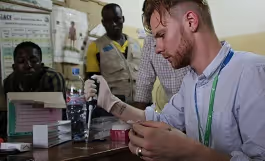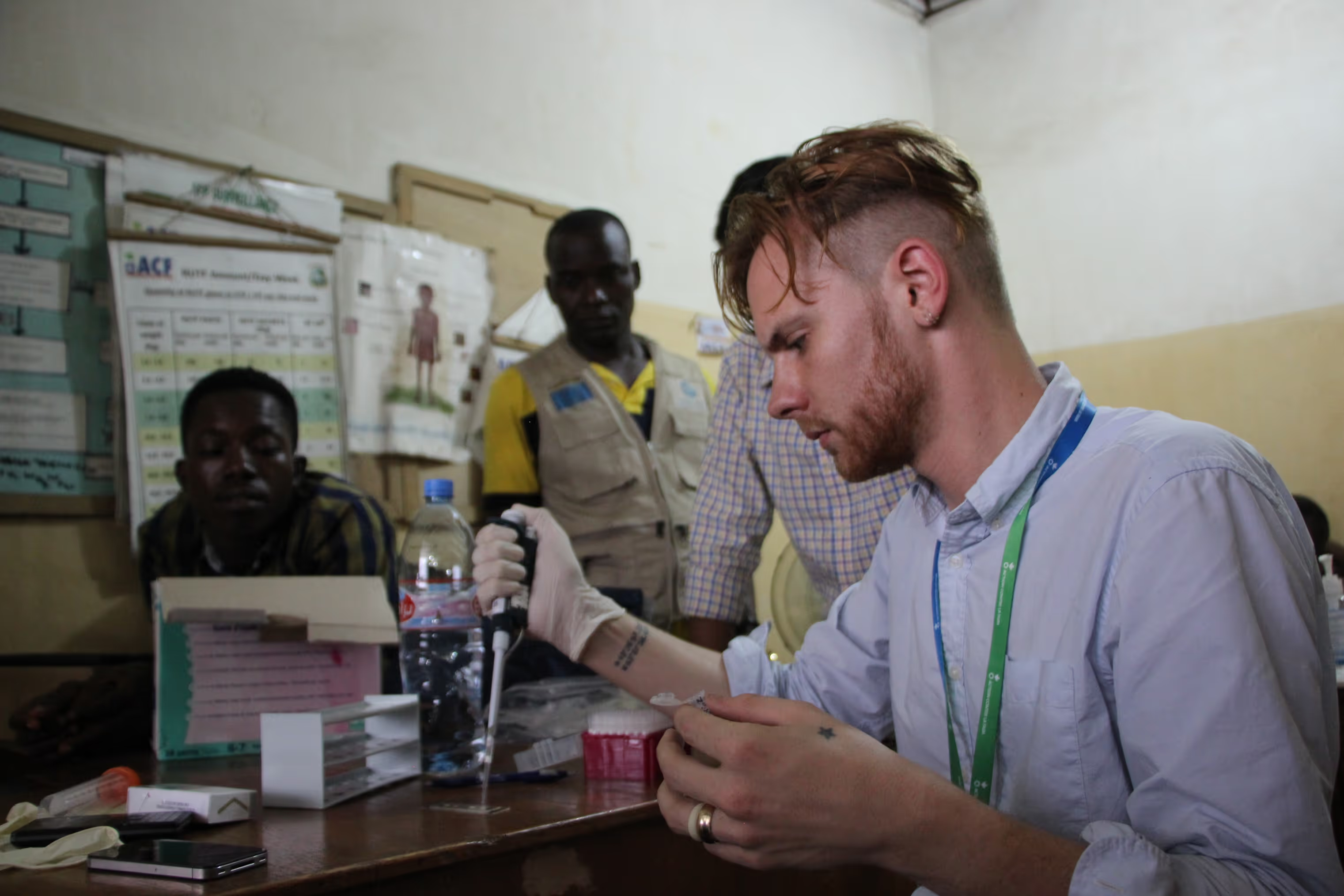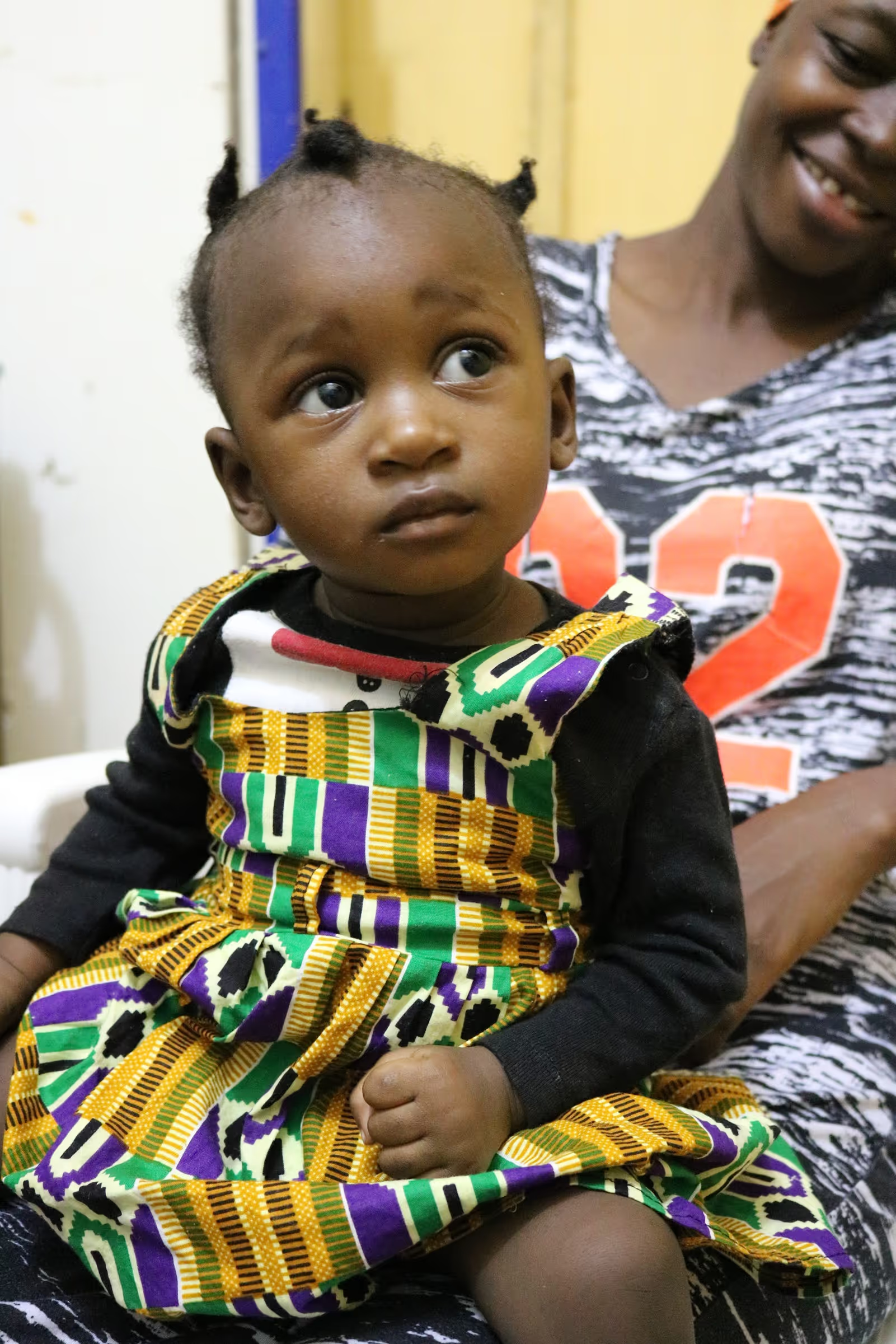Five Days of Fieldwork (Part 1)

TESTING A DIAGNOSTIC TOOL IN LIBERIA
The generator that powers the Redemption Hospital doesn’t click on until 10:30 in the morning, but this delay doesn’t slow the crowd of patients who fill the health care centre before 8a.m. In one corner of the clinic, patients wait on rows of wooden benches as healthcare workers sort through medical files, the walls surrounding them adorned with murals that illustrate basic health instructions: wear a condom to prevent HIV, wash your hands to prevent the spread of germs, sleep with a mosquito net to prevent malaria and yellow fever.

The generator that powers the Redemption Hospital doesn’t click on until 10:30 in the morning, but this delay doesn’t slow the crowd of patients who fill the health care centre before 8a.m. In one corner of the clinic, patients wait on rows of wooden benches as healthcare workers sort through medical files, the walls surrounding them adorned with murals that illustrate basic health instructions: wear a condom to prevent HIV, wash your hands to prevent the spread of germs, sleep with a mosquito net to prevent malaria and yellow fever.
The clinic is adjacent to the larger Redemption Hospital in the densely populated community of New Kru Town, a neighborhood on the outskirts of Monrovia, Liberia’s capital city. Men and women of all ages come in to seek free medical care for a variety of issues, but one corner of the clinic is dedicated to a very specific purpose––screening children for signs of malnutrition.
Staff from the Ministry of Health work their way through the growing queue of mothers and children, measuring the children’s weight, height and arm circumference before recording the measurements onto small squares of paper. The children vary in age, with the youngest in the crowd appearing to be no more than three months old. Some children seem content to calmly watch the process, while others cry when they’re taken out of their mother’s arms, contributing to the orchestra of noise that echoes through the clinic’s hallways.

This was the scene that greeted Daniel Joh and Angus Hucknall, two researchers from Duke University who had travelled from the U.S. two days earlier, making the journey across the Atlantic to complete the next stage of their research––conducting a field test for a diagnostic device that would rapidly test for biomarkers of malnutrition.
“You guys ready to get set up?” asked Trenton Dailey-Chwalibóg, a Research Project Manager and Ph.D. student from the French non-governmental organisation Action Against Hunger/Action Contre la Faim (ACF). For two years, ACF has partnered with Liberian health authorities and Duke University to investigate the clinical significance of the current diagnostic criteria of malnutrition in hospitals like Redemption. Through his role at ACF, Dailey-Chwalibóg had helped the Duke team coordinate their field test, and was now acting as their unofficial guide to Monrovia.
Joh grabbed his gear. “Let’s get started!”
NEW TARGETS AND NEW TOOLS

Today, more than 25 percent of children under the age of five are malnourished. According to the United Nations Children’s Fund, more than 16 million of these children suffer from the most extreme form of the condition, severe acute malnutrition (SAM). SAM is a major cause of death in children under five, as its victims are more likely to contract diarrhea, pneumonia and other communicable diseases that their immune systems can’t fight off. But despite the severity and extent of the problem, there is currently no simple test to diagnose malnutrition.
The World Health Organization recommends that we use two different criteria to diagnose severe acute malnutrition, with the first being the weight-for-height z-score, which is like a measurement for body mass index,” explains Dailey-Chwalibóg. “But we also measure their middle upper arm circumference, called MUAC. If children have a MUAC of less than 115 millimeters, that tells us that they are considered severely acutely malnourished and need rehabilitation, so we conduct more tests to determine if we can take them into our outpatient program. But what’s interesting is that these two measurement criteria don’t always identify the same populations of children as being severely acutely malnourished.”
“Being able to use a rapid diagnostic test for malnutrition would relieve the staff of a huge burden,” says Issa Kemokai, a Research Program Manager with ACF based in Liberia. “It would mean that we could help children regardless of the measurement criteria, and it would help us make our rehabilitation efforts more accurate.”
But to make an efficient diagnostic test, researchers would need a single, easy-to-measure biological target. The problem was that no clear target for malnutrition had been identified.
That changed after Dr. Michael Freemark, the division chief of pediatric endocrinology at the Duke University School of Medicine, conducted a field test in Uganda in 2014 to examine metabolic changes in children who were undergoing treatment for malnutrition.
We comprehensively analysed the hormonal and metabolic changes that occurred before and during recovery—no one had really ever done that before," says Freemark. "The factor that stood out as the most powerful determinant of the risk of death was a low level of a hormone called leptin.”
Leptin, a marker of energy storage, is produced by white adipose tissue. Malnourished children have a low amount of this fatty tissue, making it more difficult for them to maintain the energy needed to keep their bodies properly functioning under severe stress. According to Freemark, this hormone also helps stimulate various components of the immune system, so patients who have lower levels of leptin can also develop an immune deficiency, making them more susceptible to infections.
“Drawing blood from a patient and shipping it back for testing at Duke wasn’t really feasible,” says Freemark. “We needed a test that could work in settings around the world where malnutrition is a significant problem, and a colleague suggested I meet with Ashutosh Chilkoti, the chair of Duke’s biomedical engineering department, to see if he had any ideas about a point-of-care diagnostic test.”
“I told Tosh what I was looking for and asked for his advice, and he suggested using this new tool that he’d helped create,” says Freemark. “We ended up writing a grant with ACF and together we created a portable diagnostic device to measure various proteins including leptin.”
Now, three years after the initial collaboration, they were going to see how the test performed in the field.
Stay updated
Sign up for our newsletter to receive regular updates on resources, news, and insights like this. Don’t miss out on important information that can help you stay informed and engaged.
Related articles
.png)


Explore Elrha
Learn more about our mission, the organisations we support, and the resources we provide to drive research and innovation in humanitarian response.